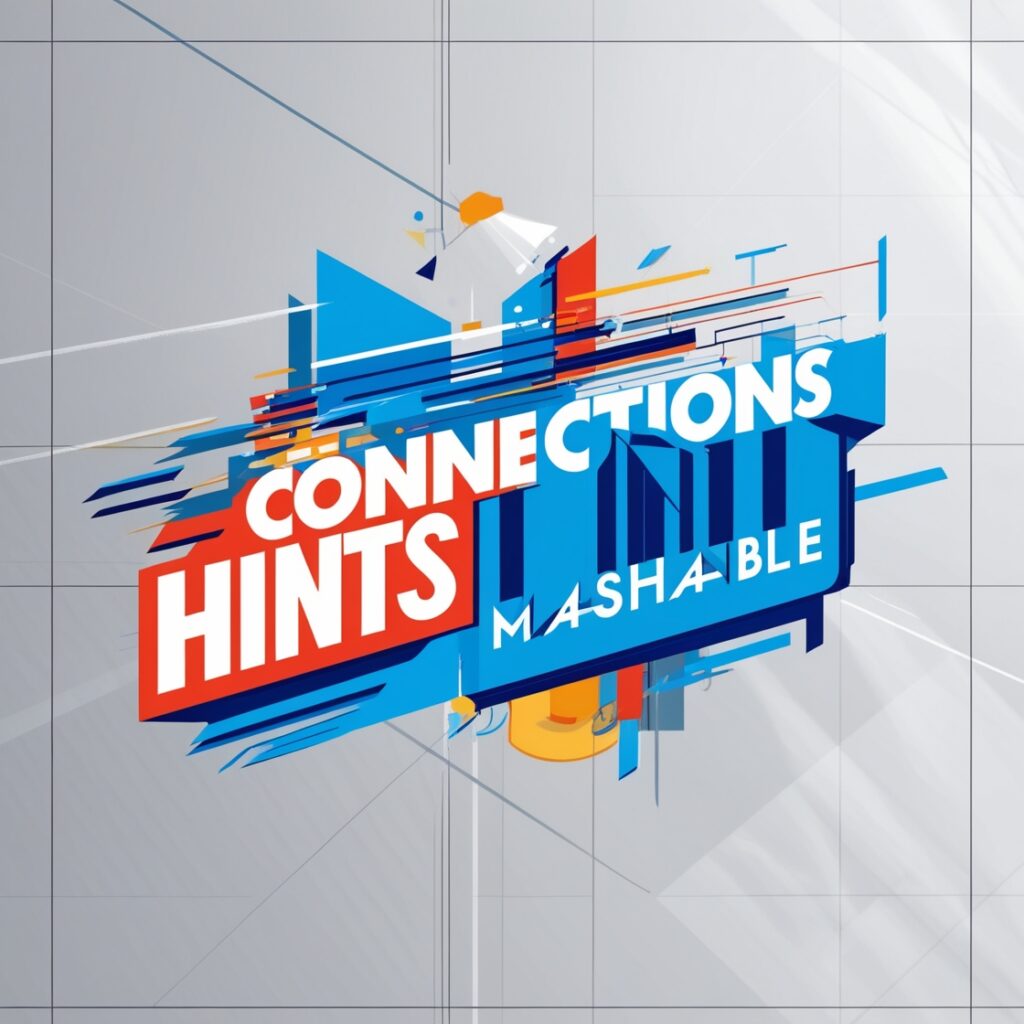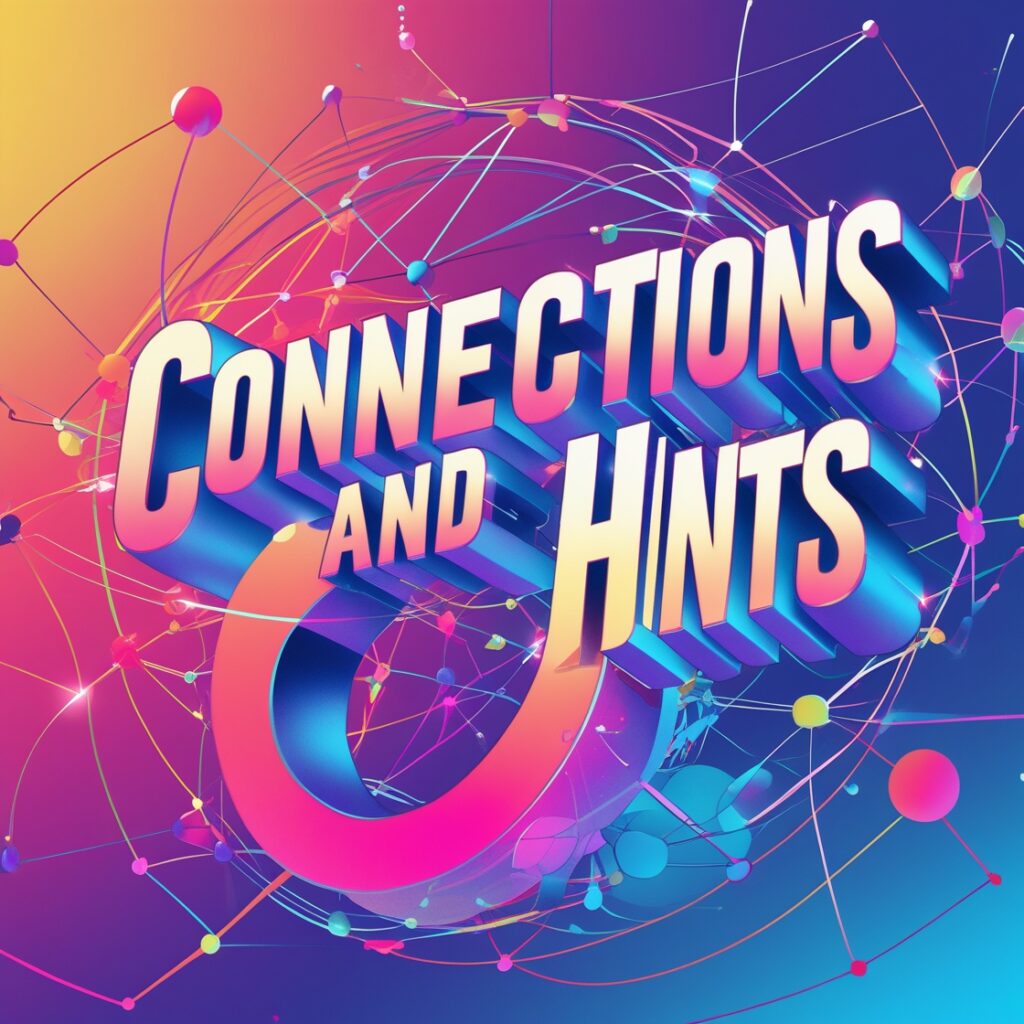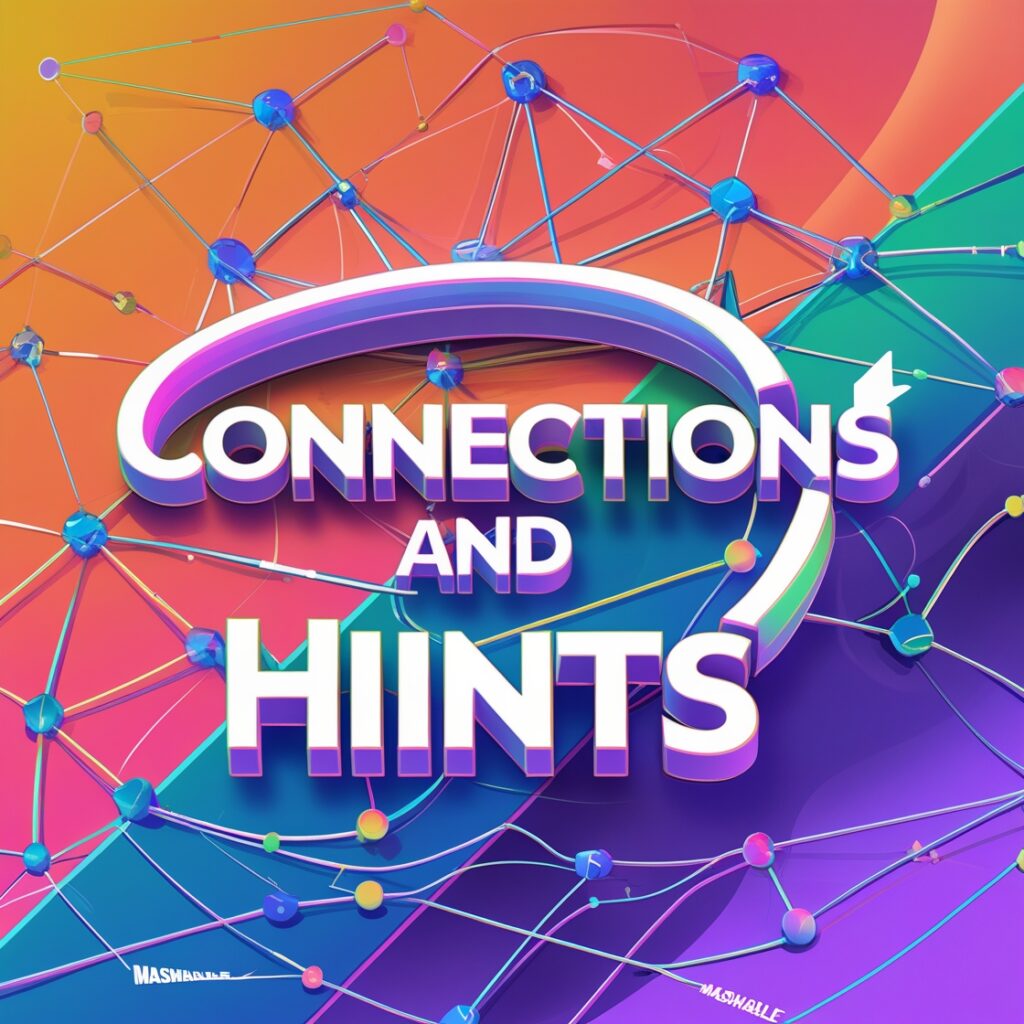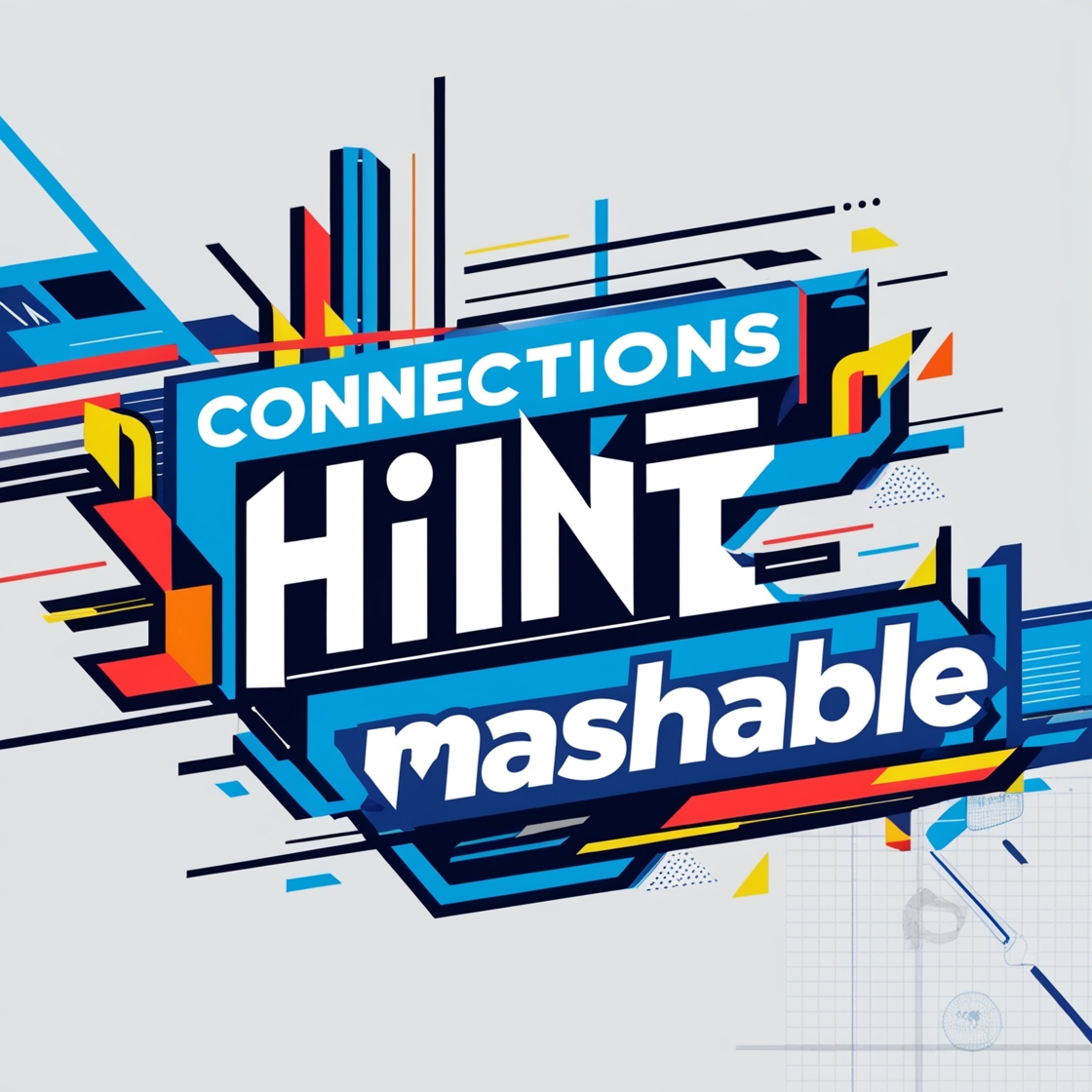The New York Times Connections puzzle has quickly become a favorite among phrase gamers—and for properly reason. This each day mind challenge offers a great mix of logic, creativity, and lateral questioning, drawing in gamers who enjoy checking out the depth of their vocabulary and important reasoning abilities.
To constantly prevail and increase your performance, it’s no longer just about success—it’s about developing the right mindset and strategic approach. That’s where insightful assets like Mashable’s Connections pointers come into play. Instead of spoiling the a laugh with direct solutions, they offer diffused, ability-constructing clues that gently manual your notion system without ruining the delight of solving it on your personal.
Unlocking the NYT Connections Puzzle with Mashable Hints: A Smarter, More Enjoyable Experience
The New York Times Connections puzzle has quickly grow to be a move-to hobby for phrase game fanatics who enjoy day by day mental demanding situations. It’s more than just matching phrases—it’s about figuring out subtle relationships and thematic hyperlinks that take a look at your vocabulary, common sense, and sample popularity.
But even the maximum skilled gamers hit roadblocks. That’s in which Mashable’s Connections suggestions prove useful. These aren’t simply solution keys—they’re carefully based clues that nudge you within the right path without spoiling the fun of figuring things out your self. They offer the ideal amount of assistance to keep your mind active and your enjoyment unhindered.
What Exactly Are Mashable Connections Hints?
Mashable gives each day steerage to help gamers solve the ever-changing NYT Connections puzzles. These clues are crafted with a gentle touch—supposed to guide in preference to deliver away the answer. Whether you’re a first-time player or a pro puzzle solver, those recommendations are designed to decorate your questioning, no longer pass it.
The key advantage? They inspire you to stay immersed in the experience. The aim isn’t handy over solutions, but to offer thoughtful nudges that sharpen your deduction competencies. This makes fixing the puzzle extra alluring, in particular whilst you unlock a class that when seemed now not viable.
How the Hint System Works: Layered Help Without Spoilers
One of the standout functions of Mashable’s gadget is its tiered method. Clues are shared in ranges, permitting you to decide how plenty help you need:
Initial suggestions are extensive and class-primarily based—such as “objects that drift” or “forms of substances.”
If you’re nonetheless caught, extra clues offer a more focused perspective, narrowing the field simply sufficient to get you thinking in another way.
In in particular elaborate puzzles, Mashable can also display a complete group as a closing inn. Even then, the cause is that will help you learn how groupings are constructed—not to replace the fixing experience.
This established flexibility gives you full control over your gameplay. You can select a mild hint, dive deeper if necessary, or clear up it completely in your personal.
Why Do Players Love Mashable Connections?
The enchantment lies in stability. Most players aren’t looking for shortcuts—they need a honest danger to triumph over the venture. Mashable provides this through supporting you suspect significantly with out revealing the solution outright.

These guidelines have become a every day ritual for hundreds of puzzle fanatics. They aid learning and development at the same time as maintaining the essence of the game. The network also advantages—many gamers use those clues to talk about techniques, exchange theories, and connect over a shared ardour for wordplay.
Exploring the Structure of the NYT Connections Game
At its center, the Connections puzzle affords a 4×4 grid with sixteen phrases. Your project? Identify four organizations of four associated terms. Each organization stocks a hidden trait, idea, or theme. Some are sincere, like “colours” or “musical units.” Others are greater abstract, regarding linguistic quirks, double meanings, or cultural references.
- What makes the puzzle honestly attractive is the variety of problem built into its design.
See Also : Guide’s Connections Hints Today Mashable
Understanding the Color-Coded System
To assist manual your thinking, every institution within the puzzle is related to a shade, indicating how challenging it’s miles:
- 🟨 Yellow – The easiest and maximum obvious connections.
- 🟩 Green – Slightly extra nuanced; calls for closer attention.
- 🟦 Blue – Specialized groupings or wordplay-based totally.
- 🟪 Purple – The trickiest tier, often related to summary good judgment, puns, or difficult to understand themes.
You’re allowed as much as 4 wrong groupings, so every bet matters. Once a collection is efficiently recognized, the phrases disappear, providing you with fewer portions to paintings with—but additionally narrowing your path forward.
Why Themes and Word Patterns Are Key
Each day’s puzzle follows a selected set of topics—some obvious, others cleverly disguised. You may stumble upon commonplace units like seasons or planets, or trickier connections like:
- Words that sound alike (homophones)
- Shared suffixes or prefixes
- Cultural references or idioms
Hidden meanings (e.G., all phrases related via “high”: excessive-pace, excessive-threat, etc.)
Identifying those styles is what makes the puzzle each difficult and amusing. The extra you play, the more you apprehend the puzzle designer’s method—and Mashable’s suggestions can assist accelerate that getting to know curve.
Advanced Techniques That Set Pros Apart
As you advantage experience, you’ll be aware increasingly more brand new strategies inside the puzzle:

- Compound structures (e.G., combining with “ebook” to create bookmark, book shop, and so on.)
- Specialized vocabulary in areas like law, sports, or generation
- Phonetic connections—in which the links are sound-based definitely in preference to which means-primarily based
Visual groupings like all words with double letters or shared patterns
These call for a blend of interest, inventiveness, and sound judgment.Even professional solvers get stumped occasionally—and that’s a part of the attraction. Astute cues, including the ones supplied by Mashable, can help you reevaluate and rebalance with out sacrificing the exhilaration of exploration.
Common Mistakes (And How to Avoid Them)
Even professional gamers fall into familiar traps. Here are some pitfalls to observe for—and the way the usage of Mashable recommendations allow you to steer clean of them:
1. Missing Subtle Wordplay
Some puzzles play on sound or shape in preference to direct meaning. Words may be:
- Homophones (e.G., “knight” and “night time”)
- Contain hidden words (e.G., “planet” interior “explanation”)
- Part of summary subjects
Learning to understand that is a ability—and Mashable’s layered hints assist you teach it without doing the be just proper for you.
2. Confirmation Bias
It’s smooth to get connected to a group that appears correct, even when it doesn’t pretty healthy. This tunnel imaginative and prescient ends in forced connections that don’t belong.
Try stepping lower back and thinking your assumptions. Mashable guidelines can advise an alternate lens to view the words, lightly nudging you to think in a brand new direction.
3. Overlooking Contextual Clues
Puzzles often require know-how of:
- Pop culture references
- Mythology (e.G., “Apollo,” “Hermes,” “Nike” as gods, no longer simply brands)
- Scientific terms or idioms
Being too literal or narrowly centered can motive you to overlook those connections. Mashable’s category-primarily based tips allow you to assume outside the dictionary.
4. Ignoring Helpful Tools
Don’t hesitate to use tips strategically. Mashable’s device is designed to encourage boom, not dependency. Start with broad suggestions and best cross deeper if wished. This permits you to enjoy the satisfaction of solving even as nonetheless gaining knowledge of a way to approach more difficult puzzles.

MCQs:
1. What is the primary purpose of Mashable’s Connections hints?
A) To reveal all the answers quickly
B) To provide entertainment for non-players
C) To gently guide players without spoiling the puzzle
D) To replace the NYT puzzle entirely
Correct Answer: C
2. What makes the NYT Connections puzzle engaging for players?
A) It offers prizes for correct answers
B) It includes colorful animations
C) It mixes vocabulary, logic, and pattern recognition
D) It allows unlimited guesses
Correct Answer: C
3. How does Mashable present its hints to avoid spoilers?
A) Through video walkthroughs
B) Using a tiered or layered structure
C) With downloadable cheat sheets
D) By emailing players the full solution
Correct Answer: B
4. What do the color-coded categories in the NYT puzzle indicate?
A) The time of day to play the puzzle
B) The level of difficulty of each word group
C) Whether the player is winning or losing
D) Which words are synonyms
Correct Answer: B
5. What type of connections might be found in the purple (most difficult) category?
A) Basic definitions
B) Simple rhymes
C) Abstract logic or obscure references
D) Easy opposites
Correct Answer: C
6. According to the article, which of the following is a common player mistake?
A) Solving the puzzle too quickly
B) Ignoring the color-coded words
C) Confirmation bias and tunnel vision
D) Using too many hints
Correct Answer: C
7. Which advanced technique is commonly seen in harder puzzles?
A) Word count comparisons
B) Cultural history essays
C) Phonetic groupings and compound word structures
D) Synonym charts
Correct Answer: C
8. What does the article suggest about using Mashable hints?
A) You should avoid them at all costs
B) Use them only after watching a video
C) Use them strategically to support learning
D) Always reveal all answers first
Correct Answer: C
9. What is one example of contextual clues players might miss?
A) The number of vowels in each word
B) Hidden references to mythology or brands
C) The color of the puzzle board
D) The font used in the game
Correct Answer: B
10. What mindset does the article recommend for mastering the puzzle?
A) Relying on guesswork
B) Memorizing past solutions
C) Developing logic, creativity, and pattern recognition
D) Reading the answers before starting
Correct Answer: C
Summary:
The article explores how Mashable’s each day hints beautify the enjoy of solving the New York Times Connections puzzle, a popular word recreation that demanding situations gamers to group related phrases. Unlike answer keys, Mashable’s clues provide non-spoiler steerage designed to help getting to know, vital wondering, and sample recognition.
The Connections puzzle itself provides a 4×4 grid of words to be grouped by means of hidden subject matters, classified by means of color-coded problem (yellow to crimson). Themes range from apparent (e.G., colours) to summary (e.G., wordplay or cultural references).
Mashable uses a tiered hint machine—from huge class clues to more specific nudges—empowering players to choose how much assist they need. This technique facilitates avoid commonplace errors like confirmation bias or missing wordplay, even as nevertheless preserving the amusing and undertaking of solving the puzzle.
Read More About News At Cento magzine

